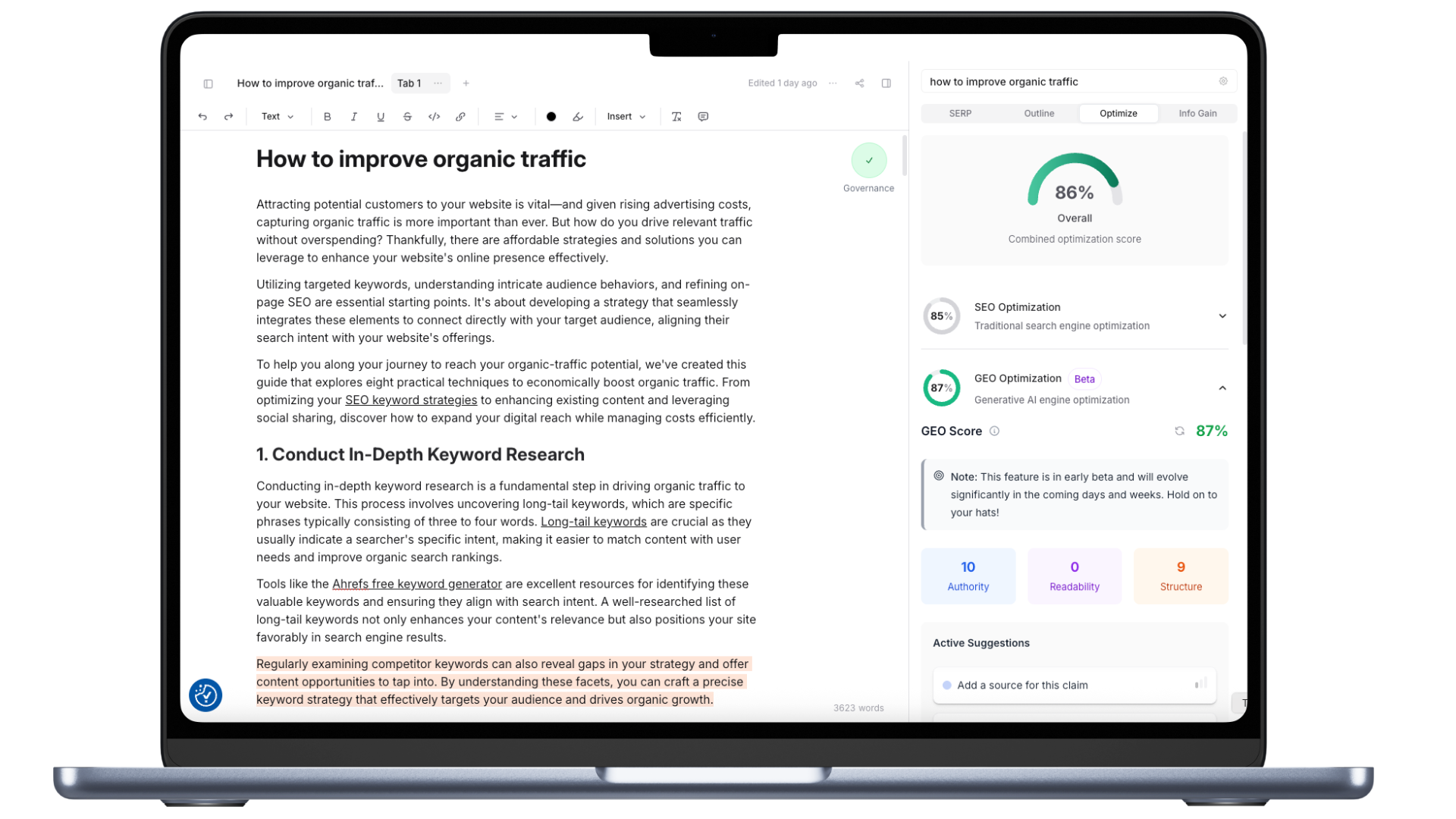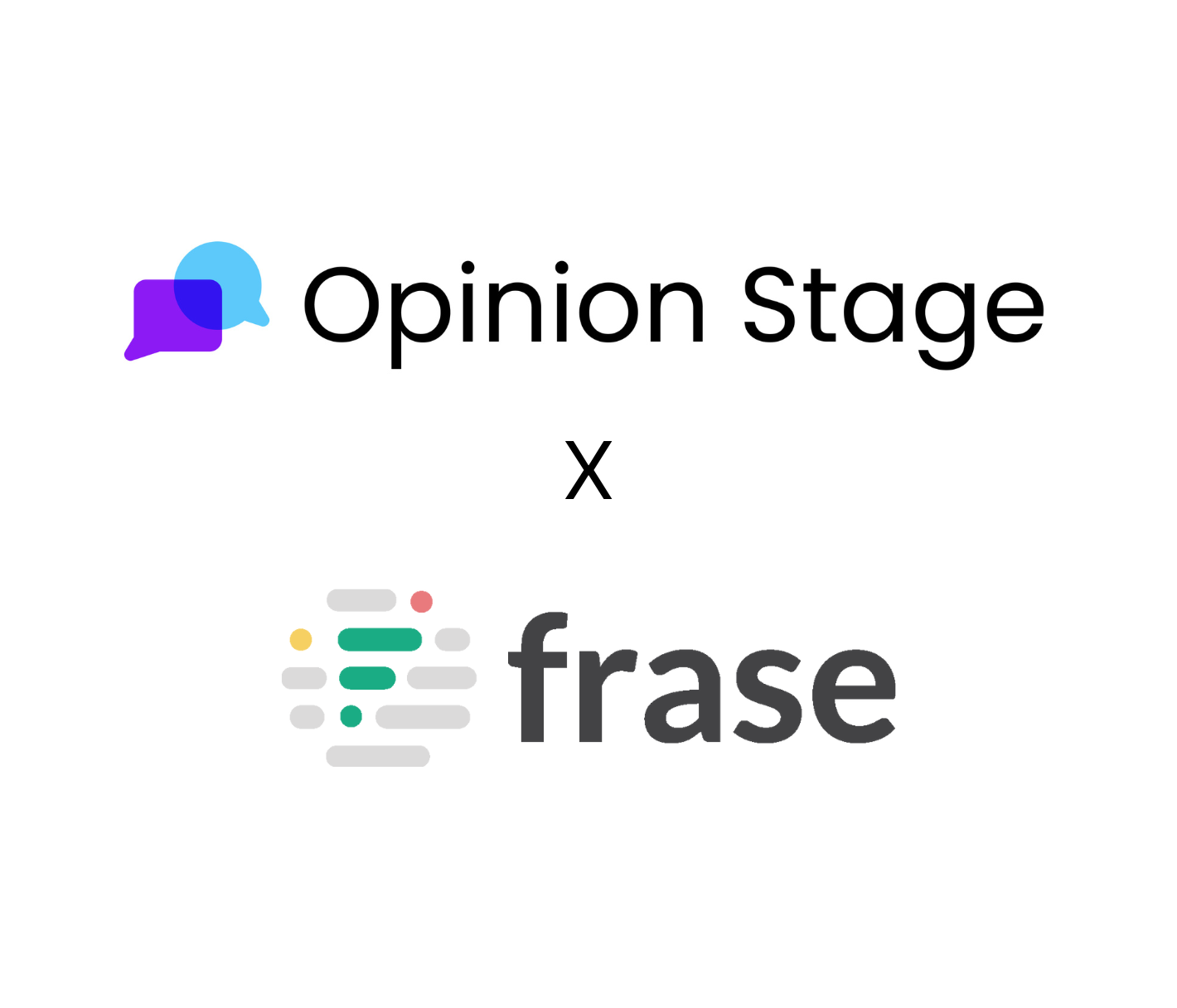Consistent content at scale: The content governance framework every creator needs
ResourcesUnlock Premium Content
Brands face a growing challenge: how to create content that consistently reflects their identity, resonates with their audience, and upholds quality standards. Without a clear governance framework, content can become fragmented, off-brand, or inconsistent—undermining trust and wasting resources.
This guide lays out a practical, actionable framework built on four essential pillars—Messaging, Voice, Mechanics, and Terminology—that every content leader and creator should define and refine. By focusing your efforts on these areas, you’ll build a repeatable system to produce content that’s consistently on-brand, engaging, and scalable.
Brands face a growing challenge: how to create content that consistently reflects their identity, resonates with their audience, and upholds quality standards. Without a clear governance framework, content can become fragmented, off-brand, or inconsistent—undermining trust and wasting resources.
This guide lays out a practical, actionable framework built on four essential pillars—Messaging, Voice, Mechanics, and Terminology—that every content leader and creator should define and refine. By focusing your efforts on these areas, you’ll build a repeatable system to produce content that’s consistently on-brand, engaging, and scalable.
Why content governance frameworks matter
Content governance frameworks provide a blueprint for how your team plans, creates, reviews, and manages content. They act as guardrails that keep your brand’s messaging aligned and your workflows efficient.
Without a framework:
- Teams may struggle with inconsistent tone and messaging.
- Content can feel disjointed across channels and formats.
- Reviews and approvals drag out, delaying time-to-publish.
- The brand risks losing trust and clarity with its audience.
In contrast, a well-defined governance framework empowers creators to work confidently, reduces revisions, and ensures every piece of content supports your business goals. It’s the foundation for scalable, high-quality content production.
The four pillars of content governance
Successful content governance hinges on clear standards in these four critical areas:
- Messaging — What core ideas, themes, and brand promises should your content consistently communicate?
- Voice — How should your content sound? What personality traits and emotional tones reflect your brand identity?
- Mechanics — What rules govern grammar, punctuation, formatting, and style?
- Terminology — Which words and phrases are preferred or prohibited to maintain brand consistency?
By systematically addressing each pillar, your team builds a comprehensive framework that guides all content creation—whether manual or AI-assisted.
Pillar 1: Messaging
Messaging is the backbone of your content governance framework. It defines the key ideas, value propositions, and brand narratives that your content should reinforce across all channels.
- Why it matters: Clear messaging ensures your audience receives a consistent and compelling story, regardless of who creates the content or where it appears.
- How to define it: Identify your brand’s core promises, unique differentiators, and essential themes. Capture these in accessible documents like mission statements, product positioning, and campaign briefs.
- Best practices:
- Keep messaging concise and focused.
- Regularly update messaging to reflect market changes.
- Make reference materials easily accessible to all creators.
Example: Frase’s Reference Docs feature allows you to centralize all key documents—from product specs to customer messaging—and feed them directly into AI content drafts, keeping every piece factually aligned and on message.
Pillar 2: Voice
Voice brings your brand’s personality to life. It’s how your messaging feels and connects with your audience on a human level.
- Why it matters: A consistent voice builds recognition, trust, and emotional engagement. It sets you apart from competitors and makes your content memorable.
- How to define it: Develop profiles that describe your brand’s tone and style—formality, emotion, assertiveness, and more. Consider the needs of different audiences and platforms.
- Best practices:
- Analyze existing content to identify voice characteristics.
- Create brand voice guidelines with clear examples.
- For agencies, consider multiple voice profiles for different clients.
Example: With Frase’s Brand Voice feature, you can build voice profiles either by analyzing your content or starting fresh, adjusting attributes like politeness and emotion to generate on-brand copy every time.
Pillar 3: Mechanics
Mechanics covers the technical “rules” of your content—grammar, punctuation, formatting, and style.
- Why it matters: Consistent mechanics make your content professional, readable, and easy to digest. They also reflect your brand’s attention to detail.
- How to define it: Establish detailed style guidelines covering sentence structure, punctuation, capitalization, and formatting conventions.
- Best practices:
- Use real-time feedback tools to catch errors early.
- Align mechanics with your brand personality (e.g., formal vs. casual).
- Update your style guide regularly based on evolving needs.
Example: Frase’s Style Guide feature lets you set custom rules and receive instant feedback as you write—ensuring every piece meets your editorial standards without extra manual checks.
Pillar 4: Terminology
Terminology is about controlling the specific words and phrases used in your content to keep your language consistent and on-brand.
- Why it matters: Using preferred terms builds brand authority and clarity, while avoiding prohibited words prevents confusion or mixed messaging.
- How to define it: Create an approved list of terms, phrases, and brand-specific language, and identify words to avoid.
- Best practices:
- Keep your terminology list accessible and easy to update.
- Educate new team members on brand language preferences.
- Integrate terminology checks into the content creation process.
Example: Frase’s Terms feature helps enforce approved language and flags off-brand wording in real-time, whether content is created manually or by AI, making brand language consistent and confident.
Applying your content governance framework
Creating a governance framework is only the first step—its real value comes when it’s seamlessly applied across your content workflows. Consistently applying your messaging, voice, mechanics, and terminology standards ensures every piece of content truly reflects your brand and meets quality expectations.
However, embedding governance into everyday writing—especially at scale and across teams—can be challenging. Manual checks are time-consuming and prone to error, and guidelines locked in static documents often go ignored.
This is where modern solutions come in. Platforms like Frase make it easier to embed your governance framework directly into the content creation process. With tools that integrate reference documents, brand voice profiles, style guides, and terminology enforcement into AI-assisted writing, you empower creators to produce on-brand, consistent content faster and with less back-and-forth.
Get support along your governance journey
Strong content governance is the foundation of consistent, high-quality content that builds brand trust and drives business growth. But governance is a journey—not a one-time project.
Frase’s Content Governance suite supports content leaders and their teams every step of the way—from defining your framework to embedding it within your daily workflows. By combining powerful features like Reference Docs, Brand Voice, Style Guide, and Terms in one platform, Frase empowers you to scale content production without sacrificing consistency or quality.
Ready to take control of your content and implement a governance framework that works?
Start your journey with Frase and transform how your team creates content—one governed draft at a time.
Get Started



